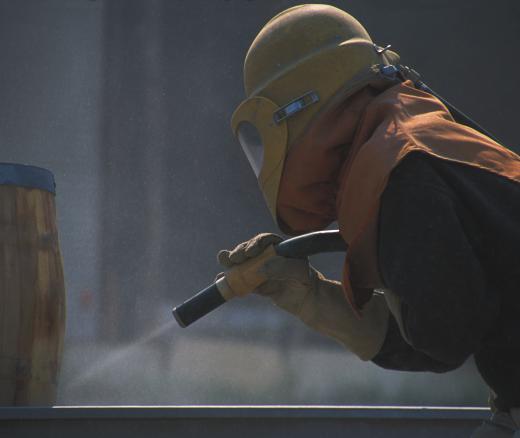Zirconia alumina, also known as zirconia toughened alumina (ZTA), is a hardened ceramic medium made of aluminum oxide and zirconium oxide. It is often used in industry as a sand-blasting medium and in casting and foundry applications. Its abrasive qualities make it an excellent candidate for the manufacture of grinding wheels and discs. The incorporation of from 10 percent to 20 percent zirconia increases the strength of the alumina through a process known as strength-induced transformation toughening. This composite is so hard and wear-resistant that it also is used in medical applications such as joint replacement.
Zirconia alumina belongs to a class of materials called ceramics, defined as inorganic and nonmetallic solids created by high heat followed by cooling. Ceramics are broken down into four categories: structural, refractories, whitewares and technical. Zirconia alumina belongs in the last category, which is composed of oxides, non-oxides and composites. It is a product of combining aluminum oxide and zirconium oxide, so it is classified as a composite.

The strength-induced transformation toughening method results in a composite whereby the zirconia is evenly distributed throughout the medium. The process induces a phase switch, causing cracks in the zirconia's structure and a change in the shape and volume of the particle, which then increases pressure on the particles of aluminum. The stress seals the cracks and makes the composite resistant to further breakdown. This process effectively doubles the strength of the material, creating a composite that is much tougher than alumina alone.
Zirconia alumina produced in this manner possesses other attributes in addition to its increased strength. The material is able to withstand very high temperatures without the loss of utility, is resistant to corrosion and is very resistant to wear. Zirconia alumina has a variety of industrial uses, such as sandblasting, and metal-cutting tools can be fashioned from this material. It is used in the manufacture of valve seats and other vehicle engine parts, and its resistance to corrosion makes its use in pump seals, bushings and impellers commonplace.
Zirconia alumina is also used in the medical industry, primarily in joint replacement parts. The wear resistance, durability and ability to withstand great weight make zirconia alumina the material of choice for orthopedic implants. In addition, the composite is used in its abrasive form to grind and crop orthopedic implants once they are released from their molds. Cut-off wheels made from zirconia alumina are preferred for pre-finishing many types of implants, because they cut faster than wheels made of alumina only, last many times longer, and work well on the hardened materials used in implants.
